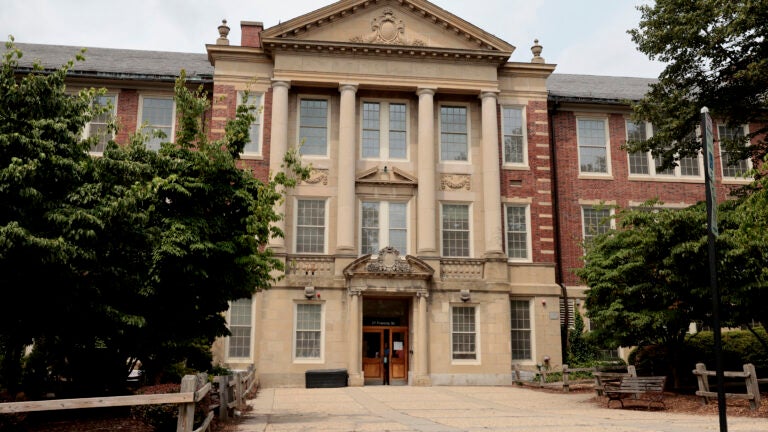World
9/11’s long legacy: How the attack on the World Trade Center is still claiming lives
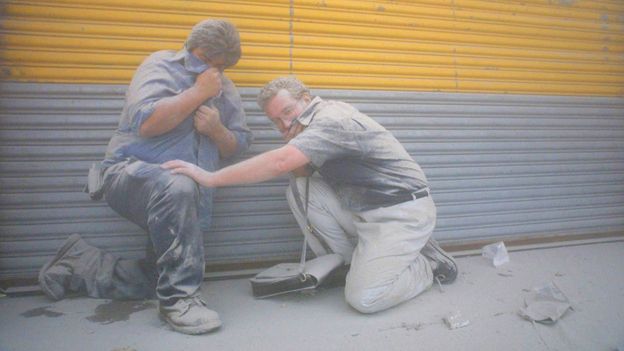
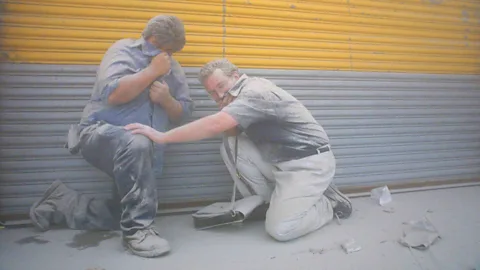 Getty Images
Getty ImagesDiseases related to the dust and smoke produced by the collapse of the Twin Towers have claimed twice as many lives than the attacks themselves 23 years ago – and new health problems are still emerging.
It was after a month of working at Ground Zero that Elizabeth Cascio developed a cough that she couldn’t shift. Soon after that, she began to suffer sinus issues and headaches.
“We all knew the air quality was not safe – it was very toxic in terms of how it felt,” says Cascio, a former New York Fire Department (FDNY) emergency medical technician. She was one of thousands of first responders who attended the shattered site of the Twin Towers at the World Trade Center in New York City during the aftermath of the 9/11 terrorist attacks. “Initially, when I came off the bus and arrived at the Trade Center, you felt like you had to hold your breath. But there’s only so long you can hold your breath. I could feel the particles coming into my nose and mouth and thought: ‘This can’t be good’.”
Cascio would ultimately spend nearly two months looking for human remains in what became known as “The Pile” among first responders. She had initially been there to set up a triage centre, assuming there would be more survivors.What Cascio didn’t know at the time was the effect it would have on her own health two decades later. In 2019, she underwent treatment for invasive cervical cancer, that has been attributed to her time at Ground Zero.
She would go on to become the FDNY Chief of Staff before retiring in 2023. Now aged 61, Cascio is still monitored by the US government’s World Trade Center (WTC) Health Program, which provides medical monitoring and treatment to those directly affected by the 9/11 attacks in New York, at the Pentagon in Washington, DC, and in Shanksville, Pennsylvania. The programme also funds medical research into physical and mental health conditions related to 9/11 exposures.
It has been 23 years since Cascio worked amid the dust, smoke and debris of the World Trade Center, and she is keen to speak about the legacy it has left on people like her.
“It’s a duty to speak about 9/11 because of the EMS workers who are underrepresented, and the women who are underrepresented,” she says.
In the hours that followed the attack on the Twin Towers, an enormous plume of smoke and dust billowed out across Lower Manhattan, over the East River and into Brooklyn. As rescue workers rushed to help at the World Trade Center site, and later as the clean-up of the vast tangle of twisted metal, glass and concrete disturbed the debris, more dust from the buildings filled the air.
 Getty Images
Getty ImagesIt later transpired that those attempts to reassure the public about the dust laden air were misguided. Research shows the dust thrown out by the collapse of the twin towers contained asbestos, heavy metals, lead and toxic chemicals such as polycyclic aromatic hydrocarbons. The fine dust contained huge volumes of gypsum and calcite – minerals commonly used in building materials including cement and plasterboard – that are known to irritate the eyes and lungs. Smoke billowing from the burning site for weeks afterwards also carried ultrafine soot particles, unburned jet fuel, along with fumes from burning plastic and wood.
The long-term effects of this on the people caught up in the catastrophe and those who tried to help are still becoming clear. Twenty three years later there are 127,567 people enrolled in the WTC Health Program, according to the US Centers for Disease Control and Prevention (CDC).
More than 82,000 of those are, like Cascio, workers and volunteers who rushed to take part in the rescue efforts or helped to clean up the wreckage at the World Trade Center in the months after 9/11. Another 44,000 were people who were working, at school or in care within the New York City Disaster Area, when the towers fell and the dust cloud enveloped the city.
“Some people got sick in two years, some people got sick in eight years, some people got sick in 12 years,” says John Feal, a demolition expert and first responder who arrived at Ground Zero on the night of the attack. “There are people who worked there for the entire eight-month cleanup and never got sick. But we were all exposed to a toxic soup no one has ever seen before.”
Feal was seriously injured six days after his arrival at Ground Zero when a piece of steel crushed his foot. Despite undergoing multiple surgeries, he remains permanently. Feal now dedicates much of his time advocating for health benefits for first responders.
Among the health conditions affecting those who were exposed to the dust and smoke on 9/11 are cancers, autoimmune diseases, asthma, respiratory illnesses and lingering post-traumatic stress disorder (PTSD). Rare diseases such as sarcoidosis – lumps formed by inflammatory cells – have also been discovered to occur at an abnormally high rates in firefighters who were exposed to the dust and smoke on 9/11.
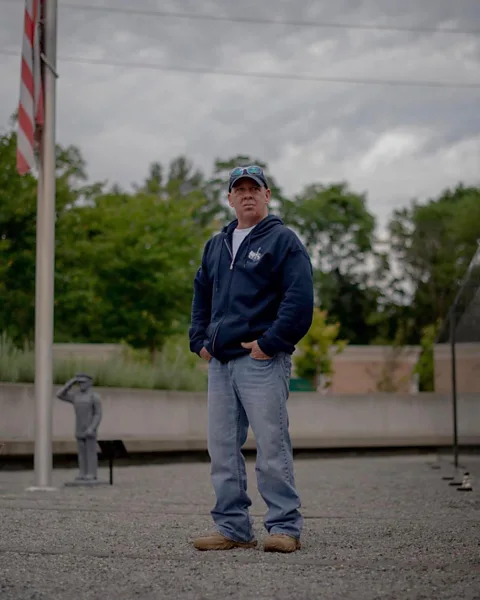 John Feal
John FealThe CDC estimates up to 400,000 people could have been exposed to toxic contaminants, risk of injury and levels of stress that could lead to later health problems. The reported conditions include a range of breathing problems, including chronic obstructive pulmonary disease, chronic respiratory disorder and painful chronic rhinosinusitis. The dust breathed in by people in New York in the days after the attacks has been found to trigger an intense inflammatory response that may have contributed to many of these long-term respiratory illnesses.
Others are suffering from gastric problems, anxiety disorders and depression. A wide range of cancers have also been reported in 37,500 people enrolled in the WTC Health Program, with non-melanoma skin cancer and prostate cancer being particularly common. A range of other cancers including breast cancer, lymphoma, lung cancer and thyroid cancer are also prevalent. The incidence of leukemia, thyroid and prostate cancer have been found to be particularly elevated.
The time it can take for cancers to develop may mean that the full scale of the health problems have yet to be realised.
“Cancer diagnoses are an ongoing scenario,” says Iris Udasin, a professor of environmental and occupational health and justice at Rutgers School of Public Health in New Jersey, who studies WTC-associated health conditions. “Solid tumours have latency periods of 20 and 25 years – so now is the time to make sure people are getting the appropriate screenings.”
“Because the patient population is overwhelmingly male, we were able to show the studies pointing to endocrine disruptors in the area around Ground Zero,” she says. She also helped to push for mammograms to be part of regular screening the programme.
“We found that if you’re diagnosed in the WTC Health Program in New York, you have a high survival rate,” says Marc Wilkenfeld, who was one of the first physicians to see survivors and first responders with health problems after 9/11. “If you’re being monitored, you have a higher rate of survival.”
Wilkenfeld witnessed the terror attacks in 2001 and immediately began studying the toxicity of the dust produced in the days that followed and the effect it was having on the first responders working at Ground Zero. He is still trying to unravel the long-term impact it is having and has become a vocal advocate for the healthcare of those affected.
“People ask me, ‘you’re still doing this 23 years later?’,” he says. “But we’re still seeing sick people.”
Recently, Wilkenfeld was part of a team of doctors and public health researchers who found that people exposed to dust from the World Trade Center are also showing signs of nerve damage. They noticed that numbness, along with pins and needles, was a common symptom among responders and survivors, and they found it appeared to relate to high levels of neuropathy than in the general population. They argue it should be added to the growing list of health conditions related to 9/11.
Heart conditions should also be recognised as associated diseases to ensure those affected get the health cover they need, say campaigners. Cardiovascular disease is substantially higher in 9/11 responders than the general population, especially among women.
“People don’t realise there are first responders in all 50 states – and abroad,” Wilkenfeld says. “It’s been 23 years [since 9/11] – people are retired now and live all over the world.”
This makes measuring the scale of the problem difficult, but also means some people with 9/11-related conditions are also missing out on support being offered in the US.
“Not everyone connects their time at Ground Zero to their conditions, so getting the word out is important,” says Bridget Gormley, whose father Billy Gormley was a FDNY firefighter who died of 9/11 related cancer in 2017. She now advocates for improved healthcare for the 9/11 community. “There are people from all over the world –international rescuers – who came to help and may be living with conditions.”
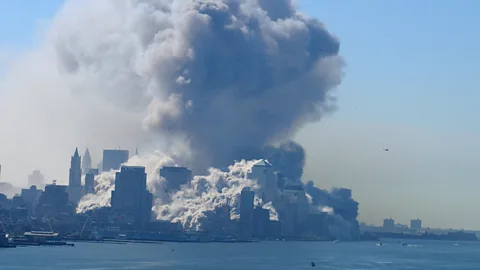 Getty Images
Getty ImagesFor some of those caught up in the events of that day, the toll it has taken on their mental health may mean some cases are being missed.
“People disconnect themselves from 9/11 – especially if they didn’t have direct correlation to the day,” says retired FDNY first responder Michael O’Connell, who was 25 years-old on 9/11 and is now aged 48. O’Connell worked in 24-hour shifts at Ground Zero in the days immediately after the attacks. He didn’t have any physical symptoms until six years later when he was diagnosed with rare autoimmune disease called sarcoidosis in 2007, when he was in his early 30s. He was one of the first 9/11 firefighters to be diagnosed with the condition, which causes abnormal lumps of inflammatory cells to form in his organs. He describes it as feeling like he has been beaten up with a baseball bat. He now does advocacy work with John Feal and the Feal Good Foundation.
“It takes time for [diseases] to develop,” he says. “For eight months we were breathing in toxic air. We’re still getting sick, and people are dying from their exposure [23 years later].”
“It’s a sad reality we’re met with – and there’s no waiting. Tomorrow can be too late for one person,” says O’Connell.
Although much of the attention has been on the first responders who worked at Ground Zero, there are also a growing number of members of the public in New York who are also starting to develop conditions related to the dust and smoke generated on that day.
Lila Nordstrom was a 17-year-old student at Stuyvesant High School in Manhattan’s East Village in 2001. She was in a lesson when the planes hit the Twin Towers, and when they collapsed dust rushed into her school just three blocks from the World Trade Center.
Today, at 40 years-old, Nordstrom believes the dust she breathed in that day has worsened her asthma. She is the founder of advocacy group Stuy Health and joined in the fight for the Victim Compensation Fund, arguing that her survivor community also deserves recognition and mental and physical health care.
“We all deserve to be monitored,” Nordstrom says, noting that survivors like herself – people in the area who did not participate in rescue and recovery efforts – have conditions comparable to first responders. “9/11 health effects affected people beyond first responders. It’s hard for people to admit they’re part of this pool. But they are part of this pool and they deserve these resources that the federal government set aside to the 9/11 community.”
It’s important she says for people to recognise they may have been affected – particularly because it can qualify them for no-cost healthcare.
Often, the conditions are harder to see – but are no less deserving of treatment. Large numbers of WTC Health Program members have developed mental health conditions such as depression, anxiety disorders, panic disorders and PTSD.
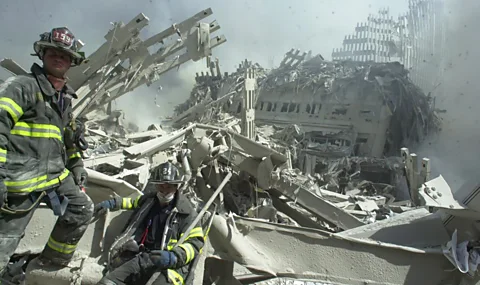 Getty Images
Getty ImagesUdasin’s own research has demonstrated that there is a prevalence of mental health conditions and says she still sees patients who are suffering from them. She notes that as first responders and survivors are getting older and addressing their health in a more serious way, mental health is a part of that.
“After people are retired, they’re more likely to seek out mental health treatment,” Udasin says. “And at this time of year, as we approach the 9/11 anniversary, every year in September we have an uptick in people with a mental health diagnosis.”
“PTSD is a physical injury too,” Feal says. “I’ve learned to accept my PTSD diagnosis. It means you’ve been through something and came out the other side with scars that make you stronger.”
Another recent study revealed other issues may still be emerging. It found evidence of cognitive impairments in people exposed to dust and smoke from the World Trade Center, perhaps due to organic neurotoxins that became airborne.
As more time passes, the community of 9/11 responders and survivors is dwindling.
“There’s a premature death rate,” Cascio says. “As a community, we view it as we’ll probably all die of 9/11 illness at some point. Everyone feels that way – whether we talk about it or not. From time to time, we will admit to each other – not necessarily to family and loved ones – that even if we wind up dying in old age, it will be from 9/11 illnesses.”
For the first responders who bravely entered Ground Zero 23 years ago, and the survivors caught up fallout from the attacks, there is an important aspect to continuing to talk about their ongoing struggles.
“‘Never Forget’ means making sure their story doesn’t die with them,” says Cascio.








